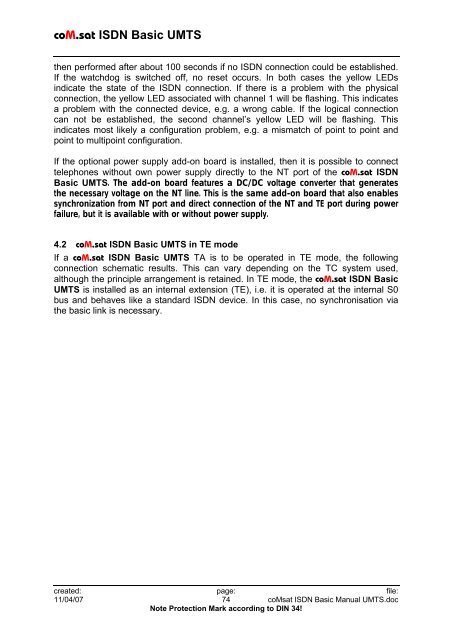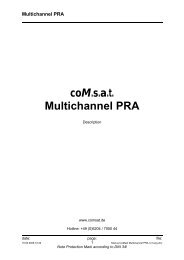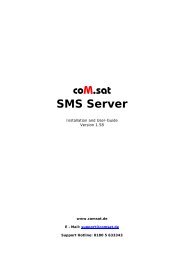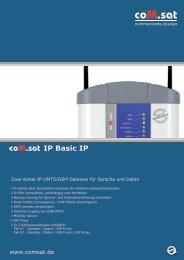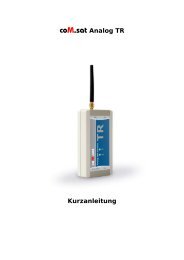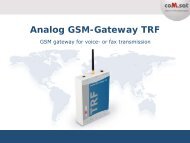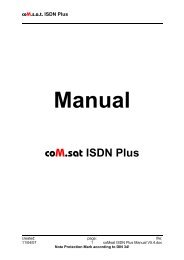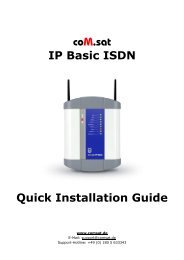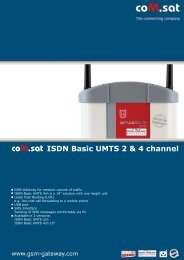coM.sat ISDN Basic UMTS
coM.sat ISDN Basic UMTS
coM.sat ISDN Basic UMTS
You also want an ePaper? Increase the reach of your titles
YUMPU automatically turns print PDFs into web optimized ePapers that Google loves.
<strong>coM</strong>.<strong>sat</strong> <strong>ISDN</strong> <strong>Basic</strong> <strong>UMTS</strong><br />
then performed after about 100 seconds if no <strong>ISDN</strong> connection could be established.<br />
If the watchdog is switched off, no reset occurs. In both cases the yellow LEDs<br />
indicate the state of the <strong>ISDN</strong> connection. If there is a problem with the physical<br />
connection, the yellow LED associated with channel 1 will be flashing. This indicates<br />
a problem with the connected device, e.g. a wrong cable. If the logical connection<br />
can not be established, the second channel’s yellow LED will be flashing. This<br />
indicates most likely a configuration problem, e.g. a mismatch of point to point and<br />
point to multipoint configuration.<br />
If the optional power supply add-on board is installed, then it is possible to connect<br />
telephones without own power supply directly to the NT port of the <strong>coM</strong>.<strong>sat</strong> <strong>ISDN</strong><br />
<strong>Basic</strong> <strong>UMTS</strong>. The add-on board features a DC/DC voltage converter that generates<br />
the necessary voltage on the NT line. This is the same add-on board that also enables<br />
synchronization from NT port and direct connection of the NT and TE port during power<br />
failure, but it is available with or without power supply.<br />
4.2 <strong>coM</strong>.<strong>sat</strong> <strong>ISDN</strong> <strong>Basic</strong> <strong>UMTS</strong> in TE mode<br />
If a <strong>coM</strong>.<strong>sat</strong> <strong>ISDN</strong> <strong>Basic</strong> <strong>UMTS</strong> TA is to be operated in TE mode, the following<br />
connection schematic results. This can vary depending on the TC system used,<br />
although the principle arrangement is retained. In TE mode, the <strong>coM</strong>.<strong>sat</strong> <strong>ISDN</strong> <strong>Basic</strong><br />
<strong>UMTS</strong> is installed as an internal extension (TE), i.e. it is operated at the internal S0<br />
bus and behaves like a standard <strong>ISDN</strong> device. In this case, no synchroni<strong>sat</strong>ion via<br />
the basic link is necessary.<br />
created: page: file:<br />
11/04/07 74 <strong>coM</strong><strong>sat</strong> <strong>ISDN</strong> <strong>Basic</strong> Manual <strong>UMTS</strong>.doc<br />
Note Protection Mark according to DIN 34!


